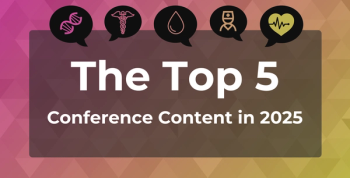
Contributor: Value-Based Care Will Provide the Freedom to Fix What's Broken in Rural Health
The tools we need to achieve long-term stability for community providers and ensure better outcomes for rural Americans are available, and CMS can help us utilize them.
Nearly
It is no secret that some of the greatest disparities in health care today exist for those who live in rural America, where geography, lack of infrastructure, and other social factors all contribute to drastically poorer health outcomes. It’s an iniquitous reality underscored by a mortality rate that’s
Recently, CMS’ Rural Health Council released its
The CMS report outlined a number of important federal programs that have facilitated better access to care for rural Americans in recent years, including:
- New payments for telehealth and diagnostic services, tools that will continue to be an essential component of preventive care moving forward
- Policies addressing the provider shortage by allowing more nonphysician practitioners to practice at the top of their licenses
- New payment models that further unshackle rural providers from the fee schedule, giving them the flexibility and freedom they need to improve outcomes and achieve financial independence in their communities
These initiatives demonstrate incredible progress made in rural care delivery and payment, but more must be done. Namely, we must also expand access to cellular-based remote patient monitoring (RPM) to empower individuals to take action in the management of their chronic conditions. Cellular-based RPM can play a critical role in reducing spending and improving outcomes for people in rural communities who struggle with cardiovascular disease, diabetes, and other chronic conditions; devices can detect dysrhythmia, for example, and alert providers and plans in real time, giving clinicians ample time to stage a lifesaving intervention.
For many patients, this technology can be the difference between life and death. This makes RPM absolutely essential for people who live in rural communities, where the nearest hospital may be tens of miles away. But despite its massive potential to revolutionize the way we approach preventive care, its minimal usage comes down to reimbursement. Change the payment models, and we’ll incentivize providers to tap RPM’s potential with millions of patients in these communities.
We must also do more to meet people where they are. It is a popular turn of phrase within health care and beyond, but I mean it quite literally: We need to broaden the experience of health and care delivery into the day-to-day routines of individuals. We need to bring services into homes and communities, where they are most convenient and accessible. Where do people shop? Where do they socialize? That is where health care must be.
The chain clinic model has achieved success in urban and suburban communities, but we can’t count on this approach to work in rural America, where the population is geographically distributed and the nearest neighbor—much less the nearest hospital—may be tens of miles away. If we want to reach people in rural communities within the routines of their week and begin bridging critical gaps in care, we must adopt hybrid models of care that encompass partnerships with trusted community providers, mobile clinicians, virtual care, and remote patient monitoring devices.
What I’m describing is nothing short of a rearchitecting of rural health, but it’s what’s needed to get quality care to the 14% of Americans who simply do not currently have access to it. The tools we need to achieve long-term stability for community providers and ensure better outcomes for rural Americans are available to us. I encourage CMS to help us use them.
Newsletter
Stay ahead of policy, cost, and value—subscribe to AJMC for expert insights at the intersection of clinical care and health economics.









































